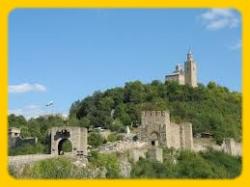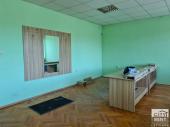|
| 10 of the most beautiful places to visit in Bulgaria |
|
|
 10 of the most beautiful places to visit in Bulgaria by Ellis Shuman - I think it’s quite amazing that Bulgaria is still considered to be off the beaten track for Western tourists, because the country has a bit of everything, and all at very affordable prices. The Mountain slopes of Bansko and Pomporovo attract skiers in the winter and the Black Sea beaches draw the crowds in the summer months. Sofia – the capital – is probably not the most beautiful city you can visit, but once you get out into the countryside and start exploring the gorgeous coastline, I think you’ll fall captive to Bulgaria’s special charm. Here is my choice for the most beautiful places to visit in Bulgaria..
10 of the most beautiful places to visit in Bulgaria by Ellis Shuman - I think it’s quite amazing that Bulgaria is still considered to be off the beaten track for Western tourists, because the country has a bit of everything, and all at very affordable prices. The Mountain slopes of Bansko and Pomporovo attract skiers in the winter and the Black Sea beaches draw the crowds in the summer months. Sofia – the capital – is probably not the most beautiful city you can visit, but once you get out into the countryside and start exploring the gorgeous coastline, I think you’ll fall captive to Bulgaria’s special charm. Here is my choice for the most beautiful places to visit in Bulgaria..
The Black Sea beaches
A good place to start is the country’s famous coastline. Bulgaria is known for its Black Sea coastline which has long stretches of sandy beaches dotted with hotels, traditional fishing villages and historical sites. Tourists flock to the glitzier resorts of Sunny Beach and Golden Sands, but I personally believe the city beaches in Varna and Burgas are just as nice.
Rila Monastery
Known as the Jerusalem of Bulgaria, this picturesque Eastern Orthodox monastery in the forested mountains less than two hours south of Sofia is definitely worth a pilgrimage visit. Named for St. Ivan of Rilski, a tenth century hermit who lived in a nearby cave, the monastery has been built, burnt, and rebuilt over the centuries, with the latest construction dating to the 1800s. Enter the courtyard and you will be stunned by the perfect harmony of the church, with its graceful arches in bold stripes of black and white set under a row of sculpted gargoyles, tiled roofs, and five domes reaching towards the sky. In the distance are the peaks of the Rila Mountains, complimenting an oasis of serenity perfect for religious hermits and modern visitors alike.
Sozopol
One of the oldest towns on Bulgaria’s Black Sea coastline, Sozopol is a popular fishermen’s village and seaside resort. Located 35 kilometers south of Burgas, Sozopol was known in the 6th century BC as Apollonia, complete with a temple dedicated to Apollo. The town is small enough for a casual stroll. You can walk along the quays as the day’s catch is unloaded or through the old town with its wooden houses calling out in desperation for repair. If you find the sea too deep or rough for swimming, you can always sunbathe on the rocks along the shore.
Plovdiv Old Town
Plovdiv, the second largest city in Bulgaria, has something that Sofia does not – an old town on a hill. The city was founded some 6,000 years ago and developed on seven hills, but one of them was destroyed at the beginning of the 20th century. The Old Town towers over the city centre with structures from different eras, including a remarkably well-preserved Roman amphitheater. The Old Town is best known for its Bulgarian Renaissance architectural style, with colorful houses displaying the National Revival’s unique exterior characteristics on every corner. Walking up the hill is a delight, with the many galleries and house museums all worth a visit.
Belogradchik
Belogradchik Fortress is a manmade construction set against a stunning outcrop of rocks. The combination is so unique and picturesque, that it seems to have been lifted straight out of a Disney fairytale. What’s even more unique than the fortress is the surrounding countryside. The Belogradchik Rocks, named in 2009 as Bulgaria’s candidate to be selected as one of the New Seven Wonders of Nature, are a stunning arrangement of strange-shaped sandstone and conglomerate rock formations.
Koprivshtitsa
Walking the narrow alleyways of the village of Koprivshtitsa, some two hours east of Sofia, you’ll feel that you’re being transported back to the momentous months of 1876, when the Bulgarians valiantly fought against their oppressive Ottoman rulers. Inside the colorful houses, representatives of Bulgarian National Revival architecture of the 19th century, local patriots plotted their rebellion leading up to the first shot being fired in the ultimately unsuccessful April Uprising. The village is full of memorials and museum houses displaying ethnographical treasures, old weapons and farm implements, national costumes, artwork, and jewellery.
Nessebar
Often referred to as the Pearl of the Black Sea, the historic town of Nessebar dates back to antiquity, when it was founded as a Thracian settlement known as Menebria. Greeks, Romans, Byzantines, Bulgarians, Crusaders, and Ottomans all took turns fortifying the ancient town, and the narrow peninsula on which it is located. Today a stroll on its cobblestone streets will bring you to remnants of some 40 brick churches, dating back as far as the 5th century. The town is such an important site it’s recognized by UNESCO as a World Heritage Site.
Veliko Tarnovo
This was the historic capital of the Second Bulgarian Empire between the 12th and 14th centuries, Veliko Tarnovo is located in central Bulgaria and is a popular tourist attraction. The reconstructed Tsarevets fortress bears no resemblance to the medieval palaces of the Bulgarian tsars who ruled from the hilltop until their defeat by the Ottomans in 1393. Still, one senses Bulgaria’s former greatness when walking through the gates of this picturesque stronghold.
Melnik
Melnik is known for two reasons. It is the smallest city in Bulgaria and it is home to some of the best wineries in the country. It will take you minutes to walk up the town’s one main street, but you’ll sit for hours at a local tavern, your head spinning under the intoxicating spell of the rich red wines. If you manage to get up from your seat, the nearby pyramidal Melnik Rocks and the Rozhen Monastery are worth a visit.
Seven Lakes
One of Bulgaria’s main tourist attractions is a group of glacial lakes located high in the Rila Mountains. The appropriate time to visit the lakes is in the summer months, as even in June the lakes can be frozen, with the terrain alternating between deep snow drifts and patches of brilliant wildflowers. The lakes are located one above the other in a mountain valley, interconnected by streams and waterfalls. Access to the lakes is not easy, although riding a ski lift shortens the distance up the steep mountainside. Legends say the lakes were formed by the tears of a female giant, crying for her beloved.
http://www.globalgrasshopper.com |
| Thursday, Sep 04, 2014 |
|
|
|
|
| » RENTALS |

|
|
|
| Office Space |
€ 395 |
|
| Location: |
Veliko Tarnovo |
|
|

|